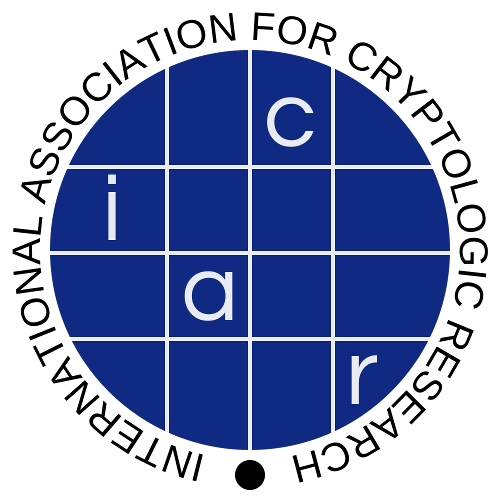Cryptanalysis of QARMAv2
DOI:
https://doi.org/10.46586/tosc.v2024.i1.188-213Keywords:
Cryptanalysis, Integral attacks, Partial-sum technique, Constraint programming, QARMAv2Abstract
QARMAv2 is a general-purpose and hardware-oriented family of lightweight tweakable block ciphers (TBCs) introduced in ToSC 2023. QARMAv2, as a redesign of QARMAv1 with a longer tweak and tighter security margins, is also designed to be suitable for cryptographic memory protection and control flow integrity. The designers of QARMAv2 provided a relatively comprehensive security analysis in the design specification, e.g., some bounds for the number of attacked rounds in differential and boomerang analysis, together with some concrete impossible differential, zerocorrelation, and integral distinguishers. As one of the first third-party cryptanalysis of QARMAv2, Hadipour et al., [HGSE24] significantly improved the integral distinguishers of QARMAv2, and provided the longest concrete distinguishers of QARMAv2 up to now. However, they provided no key recovery attack based on their distinguishers. This paper delves into the cryptanalysis of QARMAv2 to enhance our understanding of its security. Given that the integral distinguishers of QARMAv2 are the longest concrete distinguishers for this cipher so far, we focus on integral attack. To this end, we first further improve the automatic tool introduced by Hadipour et al. [HSE23,HGSE24] for finding integral distinguishers of TBCs following the TWEAKEY framework. This new tool exploits the MixColumns property of QARMAv2 to find integral distinguishers more suitable for key recovery attacks. Then, we combine several techniques for integral key recovery attacks, e.g., Meet-in-the-middle and partial-sum techniques to build a fine-grained integral key recovery attack on QARMAv2. Notably, we demonstrate how to leverage the low data complexity of the integral distinguishers of QARMAv2 to reduce the memory complexity of the meet-in-the-middle technique. As a result, we successfully present the first concrete key recovery attacks on reduced-round versions of QARMAv2. This includes attacking 13 rounds of QARMAv2-64-128 with a single tweak block (T = 1), 14 rounds of QARMAv2-64-128 with two independent tweak blocks (T = 2), and 16 rounds of QARMAv2-128-256 with two independent tweak blocks (T = 2), all in an unbalanced setting. Our attacks do not compromise the claimed security of QARMAv2, but they shed more light on the cryptanalysis of this cipher.
Published
Issue
Section
License
Copyright (c) 2024 Hosein Hadipour, Yosuke Todo

This work is licensed under a Creative Commons Attribution 4.0 International License.

